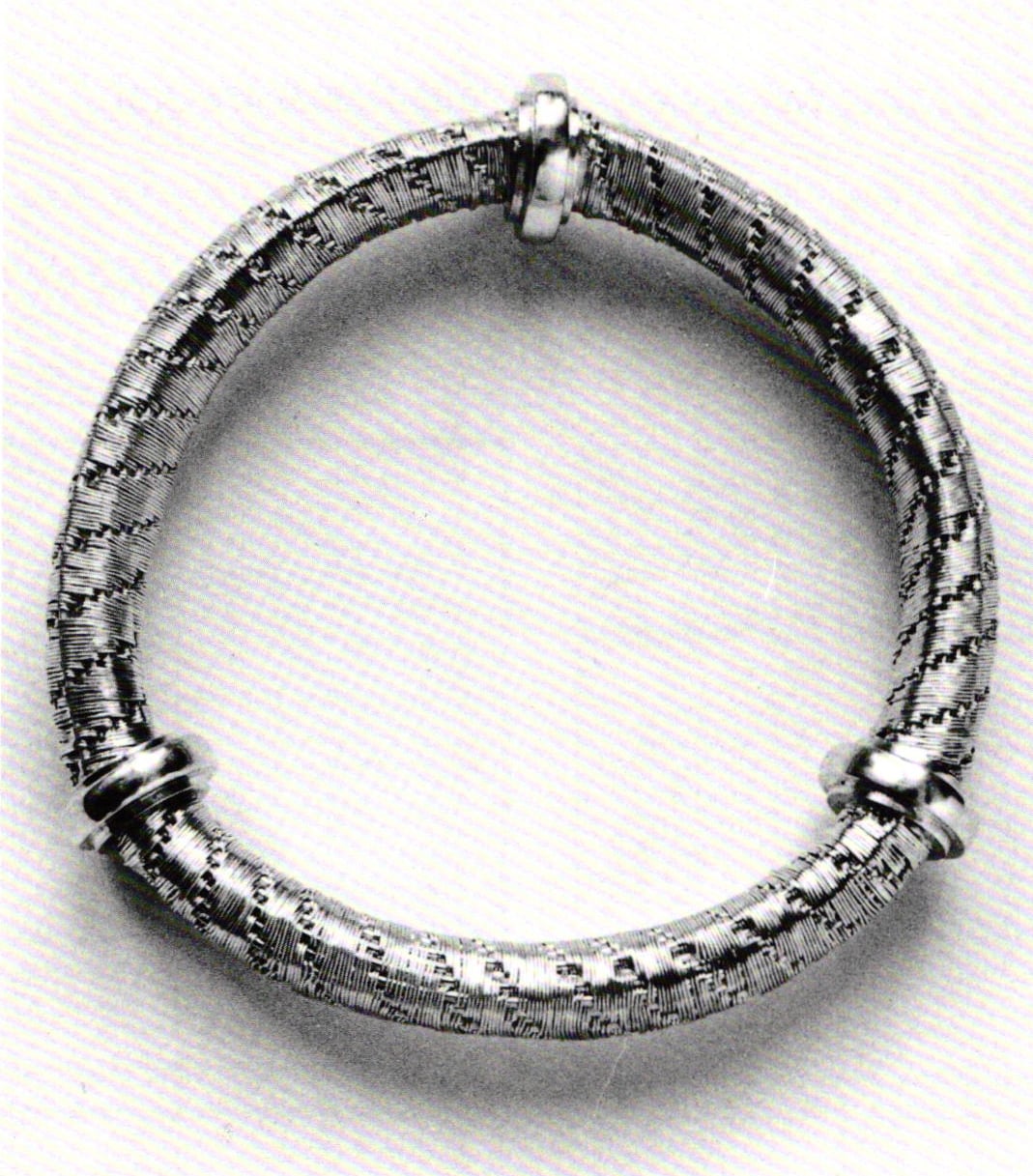Art and Technics: Act of Technique
4 Minute Read
This article is one of a series of articles from Metalsmith Magazine "Art and Technics" talking about techniques in craftsmanship and design. For this 1988 Summerissue, Tim McCreight talks about the act of technique rather than the learning of techniques.
~~~~~~~~~~~~~~~~~~~~~~
There is a tendency to think of techniques as specific answers to particular problems. The logic of his thinking leads to the conclusion that accumulating techniques leads to an ability to deal with a large number of problems. However, there is another aspect that too often goes unacknowledged, the relevance of technique as process. In fact, more than that, of technique as process. In fact, more than that, of technique as therapy.
The question-and-answer scenario is basic to our culture. From third-grade spelling test to graduate-level scientific research, the methods are the same. Describe the problem, consider the possibilities, find the solution. If someone has traveled this ground before, look to them for help through books, periodical or instruction. The idea is to collect techniques to have at our disposal when we need them.
There is a good deal of sense in this, but there are dangers too. By extension we can conclude that a good craftsman is the person who has the largest collection of techniques.
The ramifications of this attitude are easy to predict. Workshops and seminars flourish as craftspeople seek to enlarge their repertoire. Collecting techniques like merit badges, they move from Penland to Haystack to Arrowmont. Am I good goldsmith, you ask? I must be—look at all the workshops I've taken!
As someone who is fond of teaching these workshops, I must hasten to say a word in their defense. A concentrated period of focused attention is an ideal forum for the explanation and development of technique. Most people who have taken a weekend seminar or summer workshop will testify to the growth spurt they a experienced as a result. In so far as the accumulation of technical understanding and skill has value, these educational forums are a great place to grow.
Being a good craftsperson, however, involves more than acquiring technical solutions. By placing so much attention on the learning of techniques we overlook the importance of the act of technique, the doing of the thing. A common theme among students is a disdain for the repeated act. A few will boldly claim that they could never be happy working production. The more realistic will set their jaw and offer to work at repetitious tasks for a year or two, by way of paying their dues. How refreshing it is, then, to meet an accomplished professional willing to admit that he or she revels in the hours spend adrift in the rhythm of their craft.
For isn't this too a part of technique—the ability to sublimate the ego to work at hand? Technical prowess is sometimes not a matter of knowledge but one of feeling, the skill of allowing tools and materials to dictate a response from the maker. And how is this to happen in the aggressive world of the technique collector? The chances are it won't.
Our culture is known for its hunger for newness. Ours is the era of revolving-door fashion, of fads in food, philosophy and education. Even our children disdain last season's clothes or the passé rock band. It's typical of our culture that I recently heard someone say they wouldn't see waste time visiting a museum because, "I've been there before." When this is the turbulent stream swirling around us, it is hardly surprising that the repetitious nature of technique goes unremarked.
And yet if this is our plight, perhaps it is also our salvation. The sublime pleasure of making that thousandth rivet might be the antedote for a world in chaos. There are occasions when the rhythms of nature are most approachable. For the craftsperson, these come when technique transcends questions and answers and assumes a rhythm of its own. I remember watching the potter David Leach methodically joining a spout to a teapot. It was an operation he must have performed a hundred times. And yet he sat rapt, his tongue at the side of his mouth, his attention intensely focused on his work, his eyes sparkling. And this man, at 75, was charged with more energy than people half his age. Perhaps technique, the process of technical work, was the spring from which he drew such strength.
The monks in the Middle Ages had a motto, Laborare est Orare: Work is Prayer. In the sense that prayer is communion with a higher plane, most craftspeople would agree.
Tim McCreight, who writes this column regularly, is a metalsmith author and head of the Metals Department of the Portland School of Art in Maine.
You assume all responsibility and risk for the use of the safety resources available on or through this web page. The International Gem Society LLC does not assume any liability for the materials, information and opinions provided on, or available through, this web page. No advice or information provided by this website shall create any warranty. Reliance on such advice, information or the content of this web page is solely at your own risk, including without limitation any safety guidelines, resources or precautions, or any other information related to safety that may be available on or through this web page. The International Gem Society LLC disclaims any liability for injury, death or damages resulting from the use thereof.
The All-In-One Jewelry Making Solution At Your Fingertips
When you join the Ganoksin community, you get the tools you need to take your work to the next level.
Trusted Jewelry Making Information & Techniques
Sign up to receive the latest articles, techniques, and inspirations with our free newsletter.
